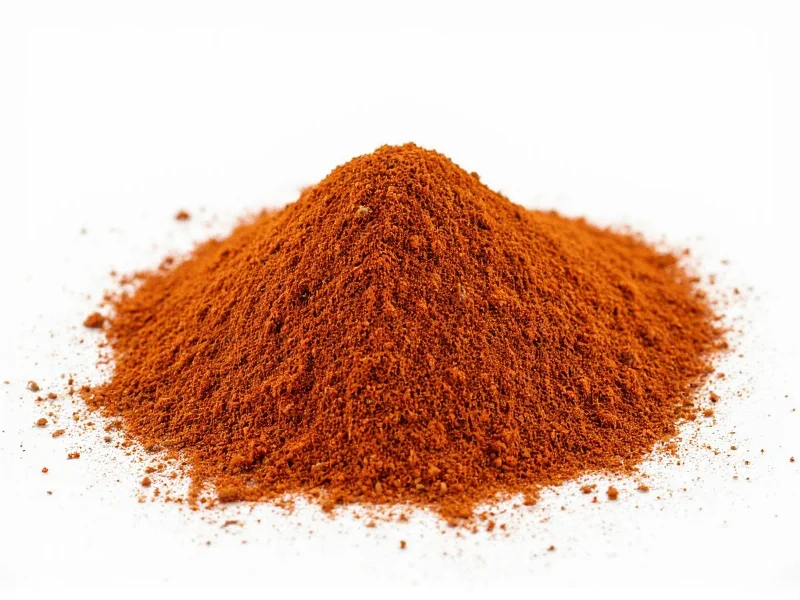Allspice, despite its name, isn't a blend but a single berry from the Pimenta dioica tree native to Jamaica. Its unique flavor combines notes of cinnamon, cloves, nutmeg, and pepper, making it essential in Caribbean jerk seasoning, pumpkin pie spice, and Middle Eastern dishes like kibbeh. When you need an allspice replacement, understanding its flavor profile helps you create effective substitutes that maintain your recipe's integrity.
Understanding Allspice Flavor Components
Allspice earns its name because early European explorers thought it tasted like a combination of multiple spices. The berry contains compounds that deliver:
- Cinnamic notes (similar to cinnamon) - provides warmth and sweetness
- Eugenol (found in cloves) - delivers pungent, spicy depth
- Terpenes (present in nutmeg) - adds subtle citrus and pine notes
- Piperine (like black pepper) - contributes mild heat
Best Single-Ingredient Allspice Substitutes
When you need a quick replacement and have limited pantry options, these single spices work as emergency allspice alternatives:
| Substitute | Ratio | Best For | Limitations |
|---|---|---|---|
| Cinnamon | 1:1 | Sweet baked goods, apple dishes | Lacks clove and nutmeg complexity |
| Cloves | 1:3 (use 1/3 amount) | Ham glazes, mulled wine | Too strong alone, can overpower |
| Nutmeg | 1:2 (use 1/2 amount) | Custards, creamy sauces | Misses cinnamon warmth |
Optimal Homemade Allspice Blends
For recipes where allspice plays a starring role, these custom blends deliver superior results compared to single spices. The standard blend works for most applications, while specialized variations enhance specific dishes:
Standard Allspice Replacement Blend
Mix together:
- 1/2 teaspoon ground cinnamon
- 1/4 teaspoon ground nutmeg
- 1/8 teaspoon ground cloves
This combination perfectly replicates allspice's flavor profile for general use in both sweet and savory dishes. For best results, toast whole spices before grinding when possible.
Specialized Substitution Blends
For Baking: 3/4 tsp cinnamon + 1/4 tsp cardamom + pinch of black pepper
Cardamom adds floral notes that complement baked goods better than cloves.
For Savory Dishes: 1/2 tsp cinnamon + 1/4 tsp cloves + 1/8 tsp cumin
The cumin enhances the earthy notes needed in meat rubs and stews.
When Substitutions Work Best
Not all recipes tolerate spice substitutions equally. Understanding which dishes are flexible helps prevent cooking disasters:
- Excellent for substitution: Breads, cakes, cookies, marinades, barbecue sauces, soups
- Good with adjustments: Pumpkin pie, apple crisp, meatloaf, chili
- Poor candidates: Traditional Jamaican jerk seasoning, authentic mole sauce, specific Caribbean dishes
For baking applications like pumpkin pie spice replacement, increase the cinnamon slightly (to 2/3 of the blend) since baked goods benefit from extra warmth. In savory applications like meat rubs, emphasize the cloves component for better depth.
Common Substitution Mistakes to Avoid
Many home cooks make these errors when seeking an allspice replacement:
- Using equal parts of all three spices - creates an overpowering clove flavor
- Substituting pumpkin pie spice 1:1 - contains additional spices that alter flavor balance
- Using pre-ground spices stored for months - results in flat, weak flavor
- Adding black pepper to sweet recipes - creates unpleasant heat in desserts
Always adjust based on your specific recipe. In delicate dishes like custards, reduce the total spice amount by 25% to prevent overwhelming the dish.
Storing Your Homemade Spice Blends
Homemade allspice substitutes lose potency faster than commercial allspice. For best results:
- Store in airtight glass containers away from light and heat
- Use within 3 months for optimal flavor (vs. 6 months for commercial allspice)
- Label containers with creation date
- Grind whole spices as needed rather than using pre-ground
For frequent users, prepare small batches weekly rather than large monthly quantities. The volatile oils that create allspice's distinctive flavor evaporate quickly once spices are ground.
Testing Your Substitution
Before adding your allspice substitute to the entire recipe, test it first:
- Mix your substitute blend
- Add a small amount to 2 tablespoons of warm water or broth
- Taste and adjust ratios if needed
- Compare against a tiny amount of actual allspice if available
This simple test prevents ruined dishes and helps you refine your blend for future use. Remember that spice perception varies by individual, so what tastes balanced to one person might need adjustment for another.
Frequently Asked Questions
Can I use pumpkin pie spice instead of allspice?
Yes, but not in a 1:1 ratio. Pumpkin pie spice typically contains additional ginger and sometimes cardamom. Use 3/4 teaspoon pumpkin pie spice for every 1 teaspoon of allspice required, and reduce other spices in your recipe accordingly.
What's the best allspice substitute for Jamaican jerk seasoning?
For authentic jerk seasoning, the standard cinnamon-nutmeg-clove blend works best. Use 1/2 tsp cinnamon, 1/4 tsp nutmeg, 1/8 tsp cloves plus 1/8 tsp black pepper for every teaspoon of allspice. Avoid single-ingredient substitutes as jerk seasoning relies on allspice's complex flavor profile.
How do I substitute allspice in apple pie?
For apple pie and other fruit desserts, cinnamon makes the simplest substitute. Use equal amounts of cinnamon for allspice, and consider adding a tiny pinch of cloves (1/16 tsp per teaspoon of cinnamon) for more complexity without overwhelming the apples.
Can I make allspice substitute with pre-ground spices?
Yes, but freshly ground spices yield significantly better flavor. Pre-ground spices lose volatile oils over time. If using pre-ground, increase the amounts by 25% and always check expiration dates - spices older than 6 months provide weak flavor that won't properly substitute allspice's intensity.











 浙公网安备
33010002000092号
浙公网安备
33010002000092号 浙B2-20120091-4
浙B2-20120091-4